(Conclusion)
Technologies like AI, theoretically, could make basic, repetitive jobs obsolete.
But not in Philippine farms, forestry, and fisheries (AFF) — at least not yet — where workers have accounted for more than a fifth to about a fourth of the country’s jobs since 20171.
Our youth (like their peers elsewhere) have been shunning farms and fisheries as a career. The average age of our farmers hovers around 57 years, while fishermen aged above 50-years-old made up 44% of the total as of 20212 and saw “significant growth” in 2012-20203.
As noted in the first part of this discussion (https://tinyurl.com/2bpxzp67), those in this aging sector may be too set in traditional practices to readily adopt new ways of doing things.
At the same time, AFF workers’ contributions to national production has been dropping, to 7.99% last year from 9.4% in 2023, 9.6% in 2022, as well as 10.1% and 10.2% at the height of the pandemic in 2021 and 2020, re-spectively. Those interested can check out World Bank tracking since 19604 that marks a peak of 27.6% of total output in 1974 and bares steady erosion since then.
And so, our farmers and fishermen need all the help they can get to maximize production with whatever inputs they have at hand.
AVAILABLE
A key to encouraging these folks to adopt new technologies and techniques is effective communication on just how specific technologies can make their work easier, faster, and more productive. I recall a lecture at the Univer-sity of Asia and the Pacific years ago where Dr. Bernardo M. Villegas, one of the school’s founders and now a BusinessWorld columnist, among others, cautioned researchers against preaching to farmers as if they knew nothing. These older folk, he said, are experts in their own right, having built their knowledge on decades of hard lessons that cannot be taught in a classroom.
To be sure, the government has not been remiss in at least recognizing the potential boost that technologies offer our farmers and fishermen, who are the poorest people in the country. Among others and to begin with, the Agriculture department has been employing digital technologies to update its Registry System for Basic Sectors in Agriculture (RSBSA), whose components consist of profiling farmers and fisherfolk, georeferencing farms, and an interventions monitoring system. Designed to provide a comprehensive database that captures personal, socioeconomic, and agri-fishery information of farmers, fisherfolk, and youth in farms and fishing communities, the RSBSA hopes to enable the government to better target intervention.
While this discussion took off in the first part of this column with the experimental use of drones in select cooperative rice and tobacco farms, other technologies either already in use or being considered include:
• for farms: high-yield, pest-, drought-, and flood-resistant hybrid and genetically modified rice, corn, and vegetables; mechanization; integrated biological control agents and eco-friendly pest management; drip irrigation and solar-powered pumps; use of biofertilizers, composting, and natural pesticides; precision farming with (besides drones) sensors and Global Positioning System (GPS); vertical and urban farming techniques like hydroponics and aquaponics for confined spaces; smart greenhouses providing controlled environments with automated temperature settings; no-till farming for soil nutrient conservation method; as well as biogas (converting farm waste into renewable energy), etc.;
• for fishing and aquaculture: aquaponics, which combines fish farming and soil-less vegetable cultivation; growing fish and shrimp in controlled environments; recirculating aquaculture systems, involving a closed-loop sys-tem that conserves water while maintaining productivity; solar salt production; newer fish-drying, -smoking, -canning, and vacuum-packing technologies; modern seaweed cultivation and processing for food, pharmaceuticals, and biofuels; GPS and sonar for efficient fish location in open waters, etc.
Not to mention the need for more cold storage facilities which are key to keeping a lid on prices of the various produce, since these structures cut wastage and losses, and ensure adequate supply to retail markets.
DEBILITATING
One weakness that will thwart any effort to raise productivity is farm size, now limited by our 40-year-old land reform law to just five hectares (ha) per farmer (although in many provinces, the average farm size has fallen to just a hectare at most) — hardly enough to justify the cost of new technologies to boost production.
Foundation for Economic Freedom President Calixto V. Chikiamco, who also sits on the board of the Institute for Development and Econometric Analysis, Inc., noted in a July 2020 column for BusinessWorld that the 5 ha farmland holding limit resulted in that size being whittled even further as original beneficiaries died and heirs inherited the land. And with average farm size at that time cut by 34% since 1985, agricultural productivity fell 17%, according to that piece.
“With that limit, why spend or take risks (with new technologies)? Why change the ways that have worked for you?” Dr. Fermin D. Adriano, formerly Agriculture undersecretary for policy, planning, and research, said on this issue in a recent chat.
Any solution will have to bypass legislation, since amending or coming out with new laws to fix this mess will take too much time.
In a paper he presented at the Australian National University in October last year, Mr. Adriano advocated farm consolidation and clustering to achieve economies of scale in order to encourage an increase in production.
“Studies have shown that the fragmentation of our farmlands into miniscule sizes has resulted in a significant decline in farm production,” the paper read. “This is due to a lack of scale economies, which is manifested in the inability to apply modern farm machinery and technologies due to small land sizes.”
This tack will not involve the consolidation of land ownership (which itself opens a can of worms due to messy documentation), but rather production scheduling of groups of small farmers to facilitate the use of farm ma-chines and technologies and ensure a steady supply of produce.
This means that the Cooperative Development Authority (CDA) has its job cut out for it. Mr. Adriano noted, however, that Republic Act No. 11364, which reorganized the CDA (formed under RA 6939), focused more on regu-lation and supervision of cooperatives. While its functions include the training of cooperative leadership and members, the law is silent on assistance in the formation of cooperatives itself (the typical farmers or fisherfolk, after all, cannot be expected to be knowledgeable about cooperative organization).
PRIVATE SECTOR’S ROLE
And this is where businesses and other private groups come in, with efforts ranging from boosting agriculture production to research and development (R&D).
“Enabling policies that promote greater collaboration and networking of government activities with the private sector that result in vertical coordination and horizontal integration of agricultural activities need to be formu-lated and enforced to engender modernization and industrialization of the agriculture sector,” Mr. Adriano said in his 2024 paper.
In a February 2024 piece5, Mr. Villegas cited the example of one private effort to consolidate more than 3,000 ha of coconut farms in a bid to achieve higher farm productivity and improve revenues through processing of raw materials into higher-value processed products, while a handful of conglomerates have paved the way in this matter for others, hopefully, to follow suit. Mr. Adriano cited leaseback, joint venture, contract growing and management contract arrangements among various schemes that may be employed to achieve the desired economies of scale.
Another example: Bayer Crop Science has been testing the use of AI-driven drones for rice-seeding in Central Luzon since 2021, and has also been looking at various hardware and applications to collect climate and plant health data that can be provided regularly to farmers.
Business groups have also put their hand to the plough.
The Management Association of the Philippines, for instance, has teamed up with the Asian Institute of Management and the Department of Science and Technology’s Philippine Council for Agriculture, Aquatic, and Natural Resources Research and Development for the Agri-Aqua Innovation Challenge (AAIC). This public-private partnership aims to help startups and students turn technological ideas into actual products and services that can be used by farmers, fisherfolk and the general public.
AAIC 2025 entries include shoe polish made from water hyacinth, coco fiber boards from coconut husks that can be a sustainable alternative to plywood, integrated sensor and data solutions suites that monitor multiple sites and stages of the agriculture value chain, mobile solar-powered irrigation systems, compact indoor vegetable farming systems, automated integrated disease monitoring, smart mobile gadgets to facilitate soil health as-sessment and receive tailored farming management tips, an autonomous water drone that collects plastic waste from coastal waters, as well as a system that improves water quality in aquaculture farms in order to prevent fish kills, among many others.
Note that half of the entries belong to students, while startups on the list, presumably, belong to young entrepreneurs and scientists. And there, perhaps, is the clearest proof that this is the channel for more of our youth to get engaged in agro-forestry-fisheries once again. And, in that way, reinvigorate this sector, fuel faster growth there, and, in turn, the entire economy.
The few farm schools are a checkered lot, due in part to rural parents’ understandable preference for their kids to take non-agriculture courses in college. Curricula in those schools can be reviewed to focus on the unique techno-logical needs of specific localities where their beneficiaries work. Hopefully, the success of efforts like AAIC will be instrumental to the success and expansion of these schools, which in turn are one of the conduits for technology de-ployment and adoption.
MORE, BETTER R&D
In his paper, Mr. Adriano also cited the need for research to be more industry-driven. “Unfortunately, many research activities undertaken by academic institutions are not demand-driven and, hence, are not of immediate relevance to farmers and agricultural entrepreneurs.”
The government itself has to increase its R&D investment in this field. “Studies have shown that the highest investment return in agriculture is derived from research…,” Mr. Adriano said in his paper.
In an August 2024 policy paper, the Sustainable Agricultural Landscapes in Southeast Asia — a platform that includes the University of the Philippines-Los Baños, the Southeast Asian Regional Center for Graduate Study and Research in Agriculture, and the French Agricultural Research Centre for International Development, among others — called for an increase in agriculture and fisheries R&D spending to at least 1% of agricultural GDP from a “below international stand-ards” 0.15% currently in order to make these sectors climate-resilient and competitive.
“The country’s public investment in agri-fisheries R&D as a percentage of agriculture GDP should be treated as a public good and intensified to at least $5 for every $100 it spends to support the agri-fisheries sector,” said a press release on this paper, which also called for harmonization of efforts and deepening coordination among R&D agencies such as the Agriculture department’s Bureau of Agricultural Research and the Department of Science and Technology’s Philip-pine Council for Agriculture, Aquatic and Natural Resources Research and Development.
In his paper, Mr. Adriano cited a flaw that bedevils much government research. “Research results… should eventually be disseminated to the farmers for adoption…” he said. “… [M]any of the research undertakings are in the ‘pi-lot’ or ‘prototype’ status, that upscaling their implementation presents a formidable challenge.
“Better coordination of the RDE (R&D effort) continuum is needed, wherein research issues are demand-driven, their positive results are applied to a bigger experimental base and, eventually, adopted by many farmers.”
For starters, Mr. Adriano added, the Agriculture department needs to identify a list of “low-hanging fruits” or technologies for scaling that can yield immediate, visible positive impacts on farmers and fisherfolk.
And that brings us to the final point: there is a need to ensure that the organizational structures of the Agriculture department, its bureaus and its units are conducive to the development, adoption and deployment of new technologies. This starts with the separation of regulatory and development functions. “It is often experienced that when the development and regulatory functions are assigned to the same bureau/unit to perform, it is most likely the development thrust that is neglected in favor of enforcing regulations,” Mr. Adriano said.
Major business consultancies like McKinsey & Co., Boston Consulting, and Bain & Co. have recommended the mainstreaming of technology development and adoption among companies and other organizations, instead of isolating this function in a silo. Whether the DA should do this immediately or in the mid-term, or whether this effort should remain crop program-specific (as it is now), is something that can be studied. What is evident is that the department needs a clearer structure to develop, adopt and roll out relevant technologies.
Agriculture’s consistently poor performance stares us in the face each time we see a farmer toiling in the field with his carabao or small fishermen braving open waters like the West Philippine Sea. Their output has paled for too long against those of their Indo-Pacific peers.
Hopefully, technologies — properly developed, adopted, and deployed — will help change their lot.
1 https://tinyurl.com/y2ds2a34
2 https://www.bfar.da.gov.ph/wp-content/uploads/2022/11/2021-Fisheries-Profile-FINAL-FILE.pdf
3 https://tinyurl.com/26es9lex
4 https://tinyurl.com/2yssxfd7
5 https://tinyurl.com/22fv535v
Wilfredo G. Reyes was editor-in-chief of BusinessWorld from 2020 through 2023.




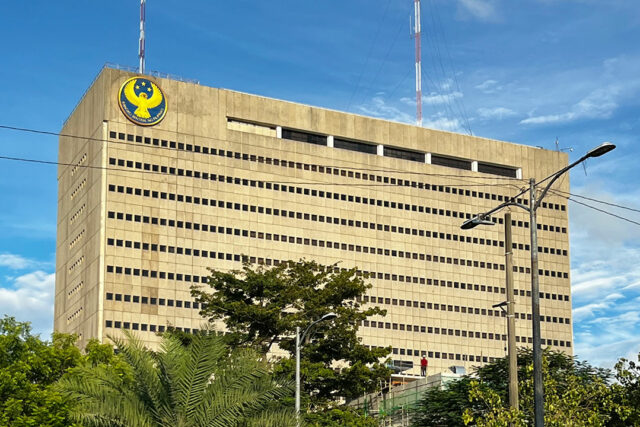
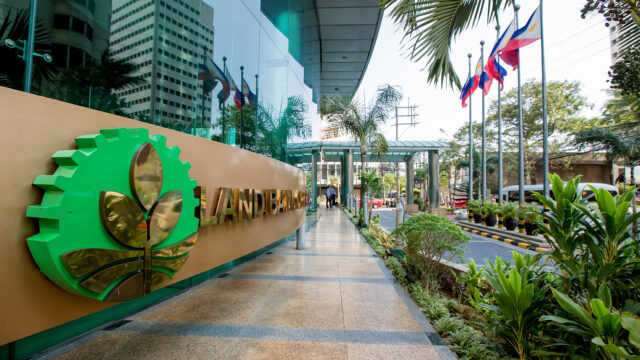

![The-Outlets-at-Lipa-[aboitizpower.com]](https://www.bworldonline.com/wp-content/uploads/2025/03/The-Outlets-at-Lipa-aboitizpower.com_-640x480.jpg)
![optimized-story-drone-1 [cropscience.bayer.com.ph]](https://www.bworldonline.com/wp-content/uploads/2025/03/optimized-story-drone-1-cropscience.bayer_.com_.ph_-640x360.jpg)
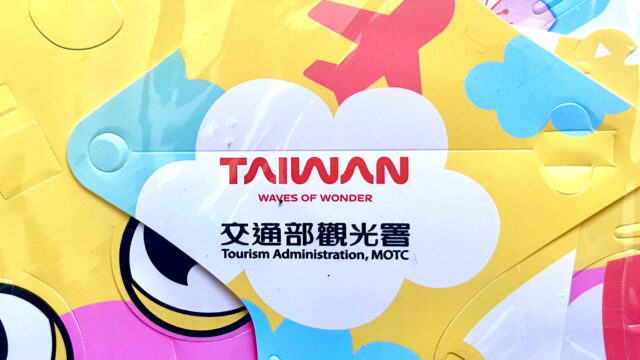







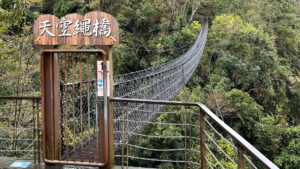





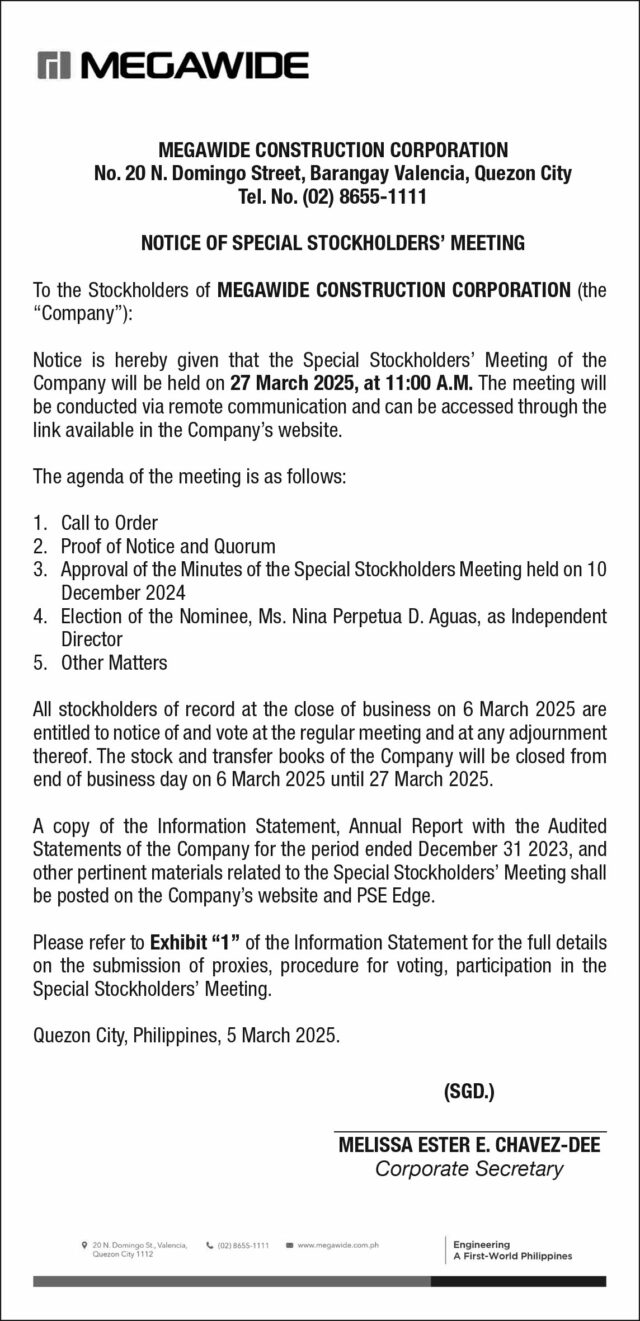

![John-Paul-Ang-[philippine-star-file-photo]](https://www.bworldonline.com/wp-content/uploads/2025/03/John-Paul-Ang-philippine-star-file-photo-640x428.jpg)
